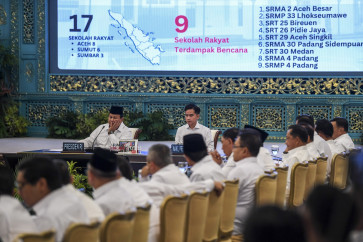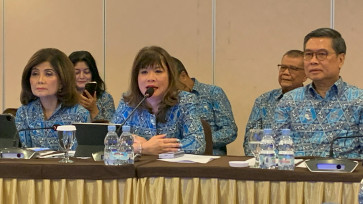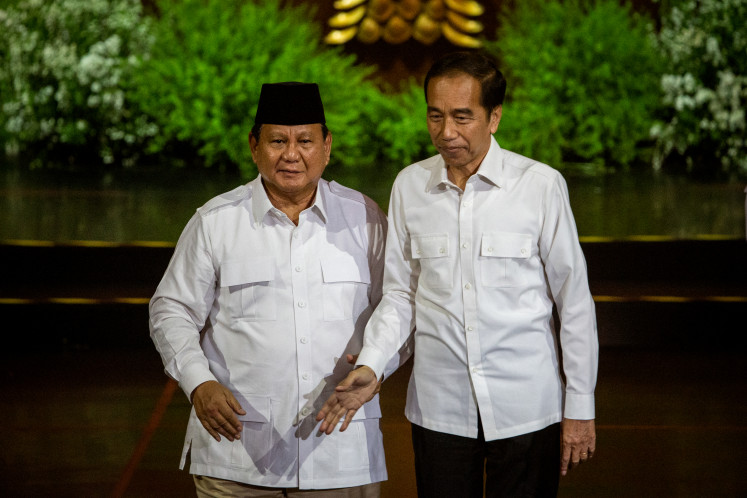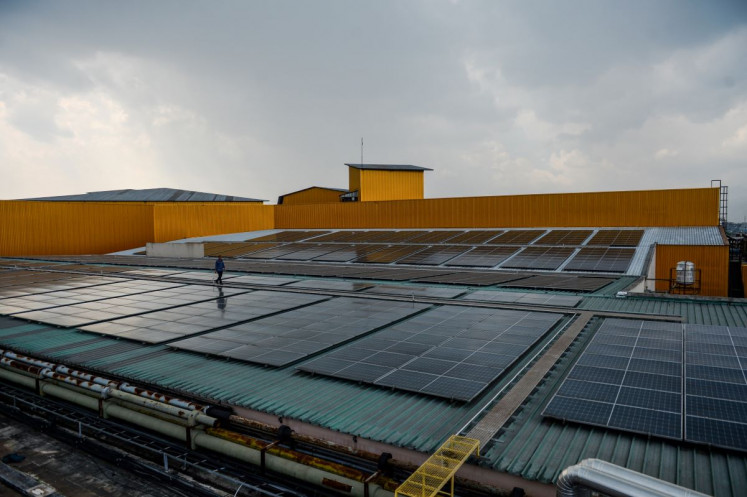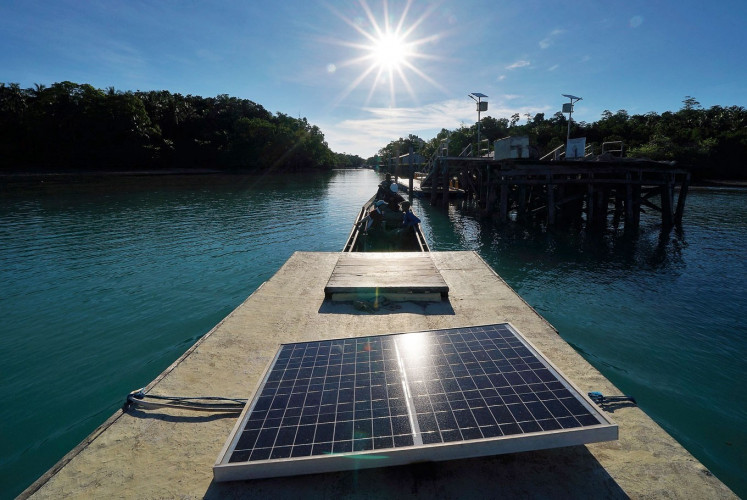Popular Reads
Top Results
Can't find what you're looking for?
View all search resultsPopular Reads
Top Results
Can't find what you're looking for?
View all search resultsSelf-sufficiency or statistical mirage? Rethinking Indonesia’s food data
True food self-sufficiency cannot be measured merely by production figures or the absence of imports. It rests on data integrity, policy consistency and the state’s ability to ensure equitable access to affordable food for all.
Change text size
Gift Premium Articles
to Anyone
 People of the Gelar Alam indigenous community carry bundles of rice stalks in a procession during the Seren Taun harvest festival in Sukabumi, West Java, on Oct. 5, 2025. The annual ceremony expresses gratitude for the year's harvest and seeks blessings for harmony with nature and ancestors. (AFP/Aditya Aji)
People of the Gelar Alam indigenous community carry bundles of rice stalks in a procession during the Seren Taun harvest festival in Sukabumi, West Java, on Oct. 5, 2025. The annual ceremony expresses gratitude for the year's harvest and seeks blessings for harmony with nature and ancestors. (AFP/Aditya Aji)
P
resident Prabowo Subianto recently declared that Indonesia had achieved food self-sufficiency within his first year in office. The statement was backed by data from Statistics Indonesia (BPS), which reported national rice production of 31.34 million tonnes from January to October 2025, cited as the highest figure ever recorded in Indonesia’s history.
Behind that assertion, however, lie several important statistical considerations that deserve closer scrutiny. The narrative of self-sufficiency must rest on accurate data and public trust. Without that, it risks becoming a politically charged perception rather than a sustainable policy foundation.
Since 1973, the BPS has released data on the production of rice and other key food commodities. Production figures were derived by multiplying the harvested area by the yield. Harvested area was estimated based on administrative field reports, inherently subjective, while yield was measured more objectively through field sampling.
Under this system, rice production figures fluctuated but showed an upward trend, increasing from approximately 28.1 million tonnes in 1973 to around 75.4 million tonnes by 2015.
Over time, however, concerns over data accuracy became increasingly pronounced. Incoherence between production data and price movements in the market often sparked debate. One major issue was the suspected overestimation of harvested areas due to the subjectivity of measurement methods.
To end the prolonged controversy, the BPS in 2016 temporarily halted the publication of official crop production figures, including rice, pending methodological improvements in area estimation.
With support of several government institutions and then-vice president Jusuf Kalla, the BPS in 2018 introduced a new method for the first time: the Area Sampling Frame (KSA). This approach combines satellite imagery of paddy fields with ground-based area sampling surveys.



